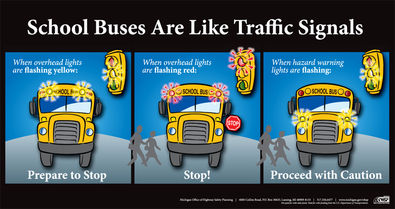With local schools opening their doors to students for a new school year, the Greer Police Department and the National Safety Council are partnering to remind parents and commuters that it’s important to slow down and pay extra attention.
“The school year can change drastically change a commute for a driver who passes through multiple school zones each day,” GPD Sgt. Randle Ballenger, said. “It’s easy to fall into the habit of maintaining regular speeds in those zones after the summer break.
The Greer Police Department will be particularly vigilant in school zones in an effort to remind and educate drivers about slowing down and being alert for children. That’s more effective than simply writing tickets.”
The GPD will post its portable LED signs and city police cars will be highly visible in school zones during the first week of school as drivers are reminded to adopt safe driving habits in those zones.
According to research by the National Safety Council, most of the children who lose their lives in bus or car-related incidents are 4-7-years-old and are walking. They are hit by the bus or by a motorist illegally passing a stopped bus.
A few precautions go a long way toward keeping children safe:
• Don't block the crosswalk when stopped at a red light or waiting to make a turn, forcing pedestrians to go around you. This could put them in the path of moving traffic.
• In a school zone when flashers are blinking, stop and yield to pedestrians crossing the crosswalk or intersection.
• Always stop for a school patrol officer or crossing guard holding up a stop sign.
• Take extra care to look out for children in school zones, near playgrounds and parks, and in all residential areas.
• Don't honk or rev your engine to scare a pedestrian, even if you have the right of way.
• Never pass a vehicle stopped for pedestrians.
Always use extreme caution to avoid striking pedestrians wherever they may be, no matter who has the right of way
If you're driving behind a bus, allow a greater following distance than if you were driving behind a car. It will give you more time to stop once the yellow lights start flashing. It is illegal in all 50 states to pass a school bus that is stopped to load or unload children.
• Never pass a bus from behind – or from either direction if you're on an undivided road – if it is stopped to load or unload children.
• If the yellow or red lights are flashing and the stop arm is extended, traffic must stop.
• The area 10 feet around a school bus is the most dangerous for children; stop far enough back to allow them space to safely enter and exit the bus.
• Be alert. Children often are unpredictable, and they tend to ignore hazards and take risks.
Ballenger cautioned drivers to be alert for young bicyclists who are riding to schools. On most roads, bicyclists have the same rights and responsibilities as vehicles, but bikes can be hard to see.
Children riding bikes create special problems for drivers because usually they are not able to properly determine traffic conditions. The most common cause of collision is a driver turning left in front of a bicyclist.
• When passing a bicyclist, proceed in the same direction slowly, and leave three feet between your car and the cyclist.
• When turning left and a bicyclist is approaching in the opposite direction, wait for the rider to pass.
• If you're turning right and a bicyclist is approaching from behind on the right, let the rider go through the intersection first. Always use your turn signals.
• Watch for bike riders turning in front of you without looking or signaling, children especially have a tendency to do this.
• Be extra vigilant in school zones and residential neighborhoods.
• Watch for bikes coming from driveways or behind parked cars.
• Check side mirrors before opening your door.
Parents who are dropping off or picking up students should also use extreme caution and be familiar with the school’s procedures. More children are hit by cars near schools than at any other location according to the National Safe Routes to School program.
The following apply to all school zones:
• Don't double park, it blocks visibility for children and other vehicles.
• Don't load or unload children across the street from the school
• Carpool to reduce the number of vehicles at the school.
